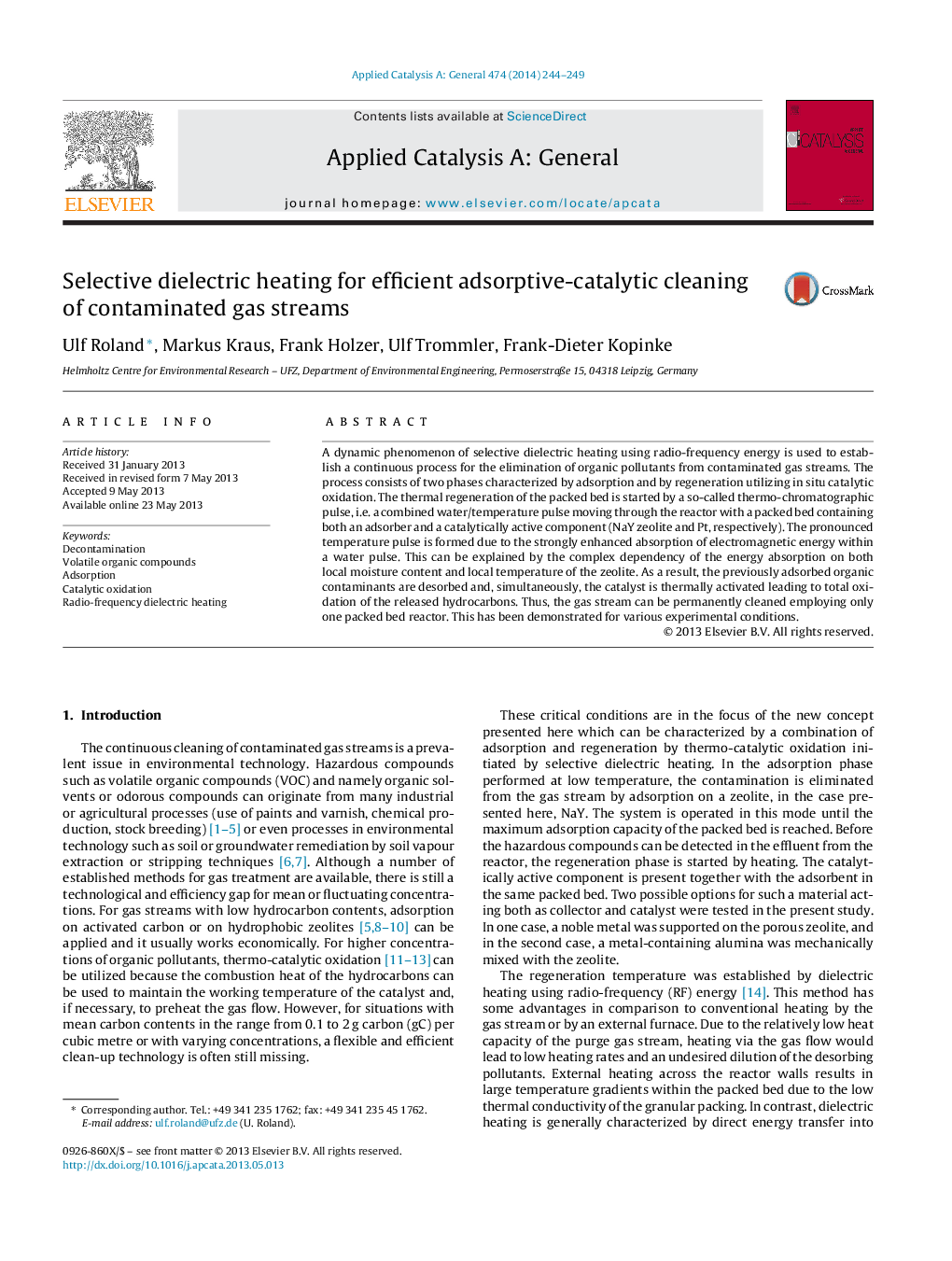| Article ID | Journal | Published Year | Pages | File Type |
|---|---|---|---|---|
| 39946 | Applied Catalysis A: General | 2014 | 6 Pages |
•A new concept of adsorptive-catalytic cleaning of contaminated gas streams is demonstrated.•Thermal regeneration of the adsorbent is made by selective heating using radiofrequency energy.•A coupled water/temperature thermo-chromatographic pulse moves through the packed bed.•This leads to both desorption of accumulated pollutants and activation of the oxidation catalyst.•Continuous cleaning of a contaminated gas flow is realized using only one packed-bed reactor.
A dynamic phenomenon of selective dielectric heating using radio-frequency energy is used to establish a continuous process for the elimination of organic pollutants from contaminated gas streams. The process consists of two phases characterized by adsorption and by regeneration utilizing in situ catalytic oxidation. The thermal regeneration of the packed bed is started by a so-called thermo-chromatographic pulse, i.e. a combined water/temperature pulse moving through the reactor with a packed bed containing both an adsorber and a catalytically active component (NaY zeolite and Pt, respectively). The pronounced temperature pulse is formed due to the strongly enhanced absorption of electromagnetic energy within a water pulse. This can be explained by the complex dependency of the energy absorption on both local moisture content and local temperature of the zeolite. As a result, the previously adsorbed organic contaminants are desorbed and, simultaneously, the catalyst is thermally activated leading to total oxidation of the released hydrocarbons. Thus, the gas stream can be permanently cleaned employing only one packed bed reactor. This has been demonstrated for various experimental conditions.
Graphical abstractFigure optionsDownload full-size imageDownload high-quality image (112 K)Download as PowerPoint slide
